#sabbat feast
Explore tagged Tumblr posts
Text
IMBOLC


Imbolc (pronounced IM-byolk) is also known as St. Brigid's Day or Candlemas. It comes from the Gaelic pagan/prechristian traditions in Ireland, Scotland, Wales, and the Isle of Man and is celebrated from the early evening of February 1 through the night of February 2 in the northern hemisphere (August 1-2 in the southern hemisphere). Imbolc is the halfway point between Winter Solstice and the Spring Equinox. It heralds the first glimmers of spring and is celebrated with a feast, celebration, and gatherings of friends.
To celebrate, you can light candles symbolizing the return of the sun, perform cleansing rituals, create a sacred space with spring-themed decorations, eat Imbolc foods such as pancakes and dairy products, make crosses of St. Brigid, and focus on new beginnings and the warmth of spring. Going naked for at least part of the holiday, as with all the sabbats (pagan feasts), is nice. I recommend a sauna or a bath by candle light.
(photo is Jack Kilmer)
32 notes
·
View notes
Text
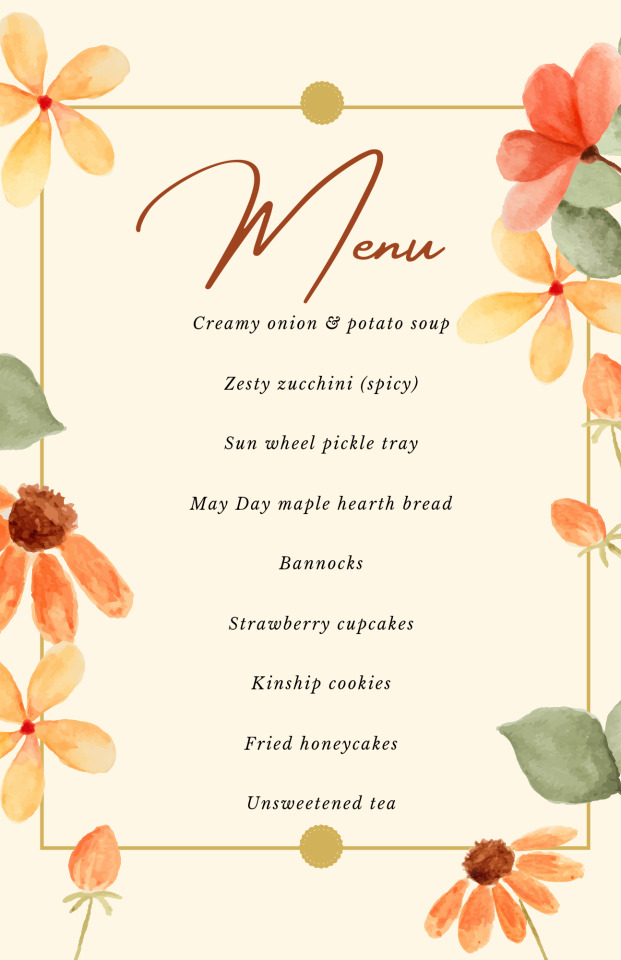
I've been working hard on putting together things for our Beltane community celebration & just finished making the menu of what I'm cooking myself for the feast! Please come join us!
#witch community#witchblr#paganblr#wiccablr#spiritual#beltaine#beltane#sabbat#wheel of the year#omaha#omaha events#witchcraft#witchcore#witches of tumblr#free event#witch#traditional witchcraft#witch circle#feast#homemade cooking
27 notes
·
View notes
Text




The feast for the Autumn equinox and Mabon tomorrow, September 22nd is ready and the lanterns will lit later on this evening. Now we are waiting for our visitors to come and eat. The wasps already started with the apples, but a woodpecker and a magpie wrre only checking out the food, but I guess either me or the rain (or both) made them fly away. The woodpecker ate an apple on the tree branch though, but I bet they'll be coming back later 😁
The offerings this year are: apples, peanuts, oat grains, sunflower seeds and rose berries.
#photography#autumn equinox#syyspäiväntasaus#mabon#feast#offerings#feeding animals#apples#peanuts#sunflower seeds#oat#rose berries#autumn#fall#september#suomi#finland#garden#witch's sabbat#pagan sabbats#witches of tumblr
7 notes
·
View notes
Text
The Astronomical Cross-Quarter Days & the Traditional Cross-Quarter Days
April 30th is a very special day for my tradition, as it is for many others. Though, I think I approach it a little differently than most.
In the Wending Way, the Cardinal Sabbath of Amplemas is celebrated upon the Astronomic Cross-Quarter midpoint between the Equinox and Solstice—which is May 5th, this year. When I discuss "astronomic" versus "traditional," I am referring to the long-held belief that the Cross-Quarter days hold power because they represent liminal midway points between the Solstices and Equinoxes; these celestially based windows of time change year to year and are what I refer to as "Astronomic." In the past, though, these seasonal points became more standardized and syncretized within the framework of the Gregorian calendar, resulting in the static dates that are generally regarded today; these are the dates I refer to as "traditional." Using our Sabbath of Amplemas as an example, it is related to the folk-celebrations of Beltane, May Day, and the like, and as such, the traditional date of celebration would seemingly be on May 1st. However, since we observe the Astronomic date of celebration, the actual date depends on the given year.
Even with the Wending Way celebrating the Celestial Sabbath days, though, the traditional Spirit Nights—which we generally call Maedoc's Feast (late night of January 31 & early morning of February 1,) Walpurgis (late night of April 30 & early morning of May 1,) Neot's Night (late night of July 31 & early morning of August 1,) and Hollantide (late night of October 31 & early morning of November 1)—are still enthusiastically observed.
In conclusion, I do believe there are eight times a year that represent astronomical periods of heightened energy and spirit activity, which fall strictly upon the equinoxes, solstices, and cross-quarter days between them. But that being said, there is a very real power to thousands of people coming together in worship and celebration—especially when it's been going on for so very long. That much veneration creates a lot of energy and spirit activity in its own right. What's more, there is a sacredness to the fact that these traditional dates have been passed down to me by my mother.
#spirit nights#pagan celebrations#pagan holidays#hollantide#walpurgis#neot's night#maedoc's feast#ysbrydnos#wending way#hexennacht#may day#amplemas#traditional withcraft#sabbatic witchcraft#folk magic
54 notes
·
View notes
Photo
[archive]










Spring Equinox {Ostara} Fantasy Feast
The equinox is upon us!! As I have decided to update my 2016 fantasy feasts Ostara was next after Imbolc. These visualization posts have helped me manifest some incredible celebrations and gatherings and as my tastes have gotten more extravagant and complicated its time for an upgrade.
Here was the previous Winter Crossquarter Feast.
In the read more there are the recipe links and additional explanations on personal symbolism and of course the image credits! I also always plan my feasts to be vegan inclusive for those with dietary restrictions but also aim for all the food to be somewhat local which matters in these seasonal feasts since it’s celebrating local nature. Anyway there is something for everyone here.
Keep reading
#aesthetics#art#bird#blog ostara#blue#feast#food#magic#manifestation#onion#ostara#recipe#recipes#sabbat#spring#spring equinox#water#witchcraft
394 notes
·
View notes
Text
Harvest Season Stew Recipe: A Nourishing Feast for Samhain
Print ShareCopied to clipboard Facebook Pinterest X Jump to Recipe As the wheel of the year turns toward Samhain, we find ourselves in a season of deep reflection and transformation. Samhain, often referred to as the final harvest festival, marks the end of the agricultural year and the beginning of winter’s stillness. Traditionally, this is a time to gather the last of the crops, share in…
#Feast#Halloween#Harvest#Nourishing#Recipe#Ritual#Root Vegetables#Sabbats#Seasonal#Stew#Vegan#Vegetarian#Wheel of the Year#Witches New Year
0 notes
Text
𝐎𝐬𝐭𝐚𝐫𝐚
⠂⠄⠄⠂⠁⠁⠂⠄⠄⠂⠁⠁⠂⠄⠄⠂⠄⠄⠂⠂⠄⠄⠂⠁⠁⠂⠄⠄⠂⠁⠁
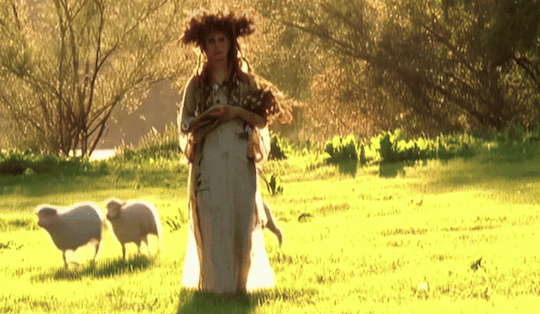
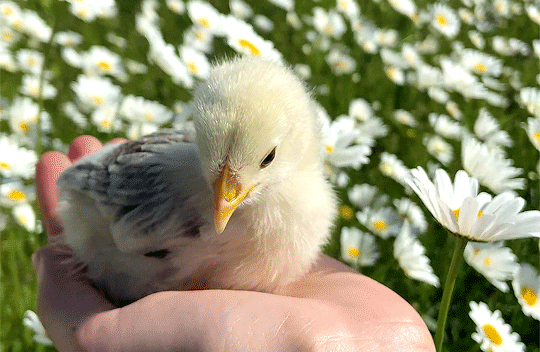
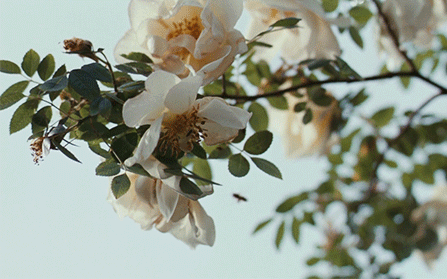
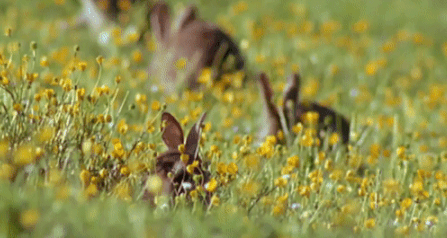
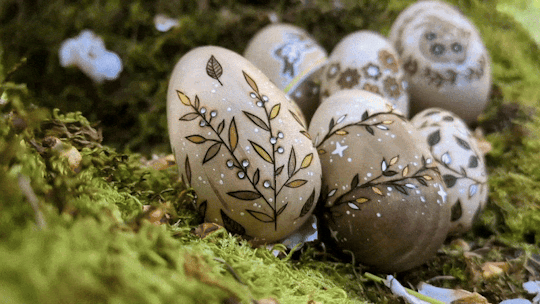

⠂⠄⠄⠂⠁⠁⠂⠄⠄⠂⠁⠁⠂⠄⠄⠂⠄⠄⠂⠂⠄⠄⠂⠁⠁⠂⠄⠄⠂⠁⠁
What is Ostara?
Ostara is a lesser sabbat that marks the official arrival of spring and takes place on the spring equinox, around March 20-21 in the Northern Hemisphere and September 20-23 in the Southern Hemisphere. It’s the moment when day and night are of equal length, symbolizing balance before the days begin to grow longer and light overcomes darkness. This is a time of renewal, fertility, and new beginnings, making it perfect for fresh starts and setting intentions for the season ahead.
⠂⠄⠄⠂⠁⠁⠂⠄⠄⠂⠁⠁⠂⠄⠄⠂⠄⠄⠂⠂⠄⠄⠂⠁⠁⠂⠄⠄⠂⠁⠁
The Legend of Ostara
According to a legend, Ostara is celebrated in honor of the Germanic goddess of the dawn and spring. The story goes that she once found a bird injured by the cold of winter. To save it, she transformed it into a hare, but the hare retained its ability to lay eggs. As a sign of gratitude, the hare painted and gifted eggs to the goddess, which is why eggs remain a central symbol of Ostara today. (1883, H. Krebs)
⠂⠄⠄⠂⠁⠁⠂⠄⠄⠂⠁⠁⠂⠄⠄⠂⠄⠄⠂⠂⠄⠄⠂⠁⠁⠂⠄⠄⠂⠁⠁
Goddess Eostre
Eostre, also known as Ostara, is the Germanic goddess of spring, fertility, and renewal. Her name is linked to the word "east" and the rising dawn, and some believe it means "Radiant Dawn." Eostre represents the spirit of spring and the return of fertility to the earth. Her arrival was traditionally celebrated with flowers, singing, bell ringing, and the lighting of new fires at dawn. She is often described as a beautiful young woman with flowers woven into her hair, accompanied by her consort and also her sacred animal, a hare. Sometimes he appears as a full-grown man, other times as a small rabbit cradled in her arms. Together, they bring eggs, a powerful symbol of the earth’s rebirth and fertility.
There isn’t much information about Eostre, but she is mentioned in the writings of an 8th-century monk, Venerable Bede. He recorded that the pagan Anglo-Saxons of medieval Northumbria held festivals in her honor during the month of April. Other than this, we don’t know much about how she was worshiped in ancient times. However, by the 19th century, she had become an important figure in German folklore, appearing in literature, paintings, and stories. She is often depicted as a youthful maiden adorned with flowers, symbolizing nature’s renewal after winter.
Some ancient festivals are said to have honored her with offerings of flowers, eggs, and feasts, welcoming the warmth and life she brings. Venerable Bede documented these traditions around the year 700 CE while traveling through Europe, recording pagan customs for the Catholic Church. The Church later attempted to shift the focus from Eostre to the resurrection of Jesus, but many ancient traditions remained deeply rooted. Eventually, instead of trying to erase them, the Church adapted and merged the two celebrations, renaming their spring festival “Easter” as a way to unite both traditions.
⠂⠄⠄⠂⠁⠁⠂⠄⠄⠂⠁⠁⠂⠄⠄⠂⠄⠄⠂⠂⠄⠄⠂⠁⠁⠂⠄⠄⠂⠁⠁
The Symbolism of The Painted Eggs
Eggs have long been a symbol of fertility, renewal, and the emergence of new life. Many cultures have used painted eggs in their spring festivals, from ancient Egyptians and Persians to European pagans. In the context of Ostara, eggs represent the potential for new beginnings and the fertility of the land as it awakens from winter. Decorating eggs is a tradition that has continued for centuries, carrying the magic of transformation and the blessings of abundance for the coming season.
⠂⠄⠄⠂⠁⠁⠂⠄⠄⠂⠁⠁⠂⠄⠄⠂⠄⠄⠂⠂⠄⠄⠂⠁⠁⠂⠄⠄⠂⠁⠁
Magic Correspondences
Planets: Mars
Season: Spring
Element: Air
Time of the Day: Dawn, Early Morning
Tarot: The High Priestess, The Emperor, Sevend of Wands, Justice
Colors: All pastel colors, yellow, green, pink, blue, brown
Herbs: Sorrel, Mint, Rosemary, Ginger, Irish Moss, Tansy, Woodruff, Wood Betony, Star Anise, Catnip
Fruits: Strawberries, Tangerine, Bananas, Lemon, Grapefruit, Apple, Orange, Mulberries, Kiwi
Vegetables: Artichokes, Asparagus, Carrots, Spring Onions, Garlic, Wild Nettles, Mushrooms
Crystals: Aquamarine, Jasper, Amethyst, Rose Quartz, Green Aventurine, Moonstone. Amazonite
Runes: Teiwaz, Ehwaz, Berkana
Trees: Birch, Rowan, Dogwood, Ash, Alder
Godesses: Eostre, Freyja, Aphrodite, Isis, Hecate, Demeter, Gaia, Athena, Astarte, Minerva, Cybele, The Morrigan
Gods: Mars, Ares, Apollo, Pan, Cernunnos, Tyr, Odin, Osiris, Dagda, Adonis
Dragon: Grael, Sairys
Flowers: Daffodil, Hyacinth, Daisy, Tulips, Clover, Crocus, Violet, Rose, Jasmine, Lilac, Honeysuckle
Animals: Hare, Rabbit, Chicks, Lamb, Butterfly, Robin, Bee, Snake. Deer, Wolf
Magical Powers: Balance, Renewal, Action, New Beginnings, Hope, New Possibilities, Fertility, Rebirth
Symbols: Rabbits, Eggs, Flowers, Bees, Birds and Nests, Butterflies, Flower Crowns, Seeds
⠂⠄⠄⠂⠁⠁⠂⠄⠄⠂⠁⠁⠂⠄⠄⠂⠄⠄⠂⠂⠄⠄⠂⠁⠁⠂⠄⠄⠂⠁⠁
Activities to do:
🐰 Decorate your space with Ostara symbols like eggs, bunnies, baby chicks etc.
🐣 Start planting seeds in your garden.
🐰 Buy or pick fresh flowers and place them in your home.
🐣 Paint some eggs. Use simple colors or add sigils, runes, symbols or anything you want to attract.
🐰 If you have a farm or a garden, it's the perfect time to buy and raise baby chicks! <3
🐣 Enjoy a festive meal to celebrate both Ostara and Spring Equinox.
🐰 Do some painting or other creative activities.
🐣 Do a deep spring cleaning, you rearrange your furniture for a fresh start.
🐰 Clean up your garden.
🐣 Leave seeds in your garden for birds.
🐰 Spend time in nature and look for the first signs of spring.
🐣 Make a list of goals to accomplish before spring ends.
🐰 Burn some incense to cleanse your space.
🐣 Make special Ostara candles with seasonal colors or herbs.
🐰 Do a tarot, rune, or pendulum reading in the morning of Ostara.
🐣 Try an Ostara guided meditation to connect with the celebration.
🐰 Honor Goddess Eostre with offerings or prayers.
🐣 Make an Ostara magickal jar
🐰 Wear clothing or jewelry in Ostara colors.
🐣 Try new recipes, especially with eggs and carrots.
🐰 Drink some tea and relax.
🐣 Read about Ostara and its traditions.
🐰 Make a flower crown for yourself or a loved one.
🐣 Try colorful makeup inspired by spring.
🐰 Dye eggs naturally or try flower prints on them.
🐣 Make friendship bracelets and share them with your loved ones.
🐰 Spend time with animals and connect with their energy.
🐣 Host an Ostara picnic or dinner with friends or family.
🐰 Plant your dream garden or buy new flower seeds.
🐣 Try aromatherapy with fresh scents (spring flowers).
🐰 Plan an egg hunt for fun with friends or family.
🐣 Connect with deities associated with Ostara and spring.
🐰 Worship your deities and honor Goddess Eostre.
🐣 Paint your nails in pastel colors.
🐰 Decorate your altar with Ostara symbols and colorful ribbons.
🐣 Try new activities, change routines, and care for yourself!
⠂⠄⠄⠂⠁⠁⠂⠄⠄⠂⠁⠁⠂⠄⠄⠂⠄⠄⠂⠂⠄⠄⠂⠁⠁⠂⠄⠄⠂⠁⠁
Food and Drinks:
Anything that has eggs! omelet, deviled eggs, stuffed eggs, carrot cake, braided bread, honey pastries, lamb, ham, fish, green vegetables, asparagus, goat cheese, sheep cheese, cow milk cheese, goat milk, sheep milk, cow milk, seasonal fruits, orange juice, tangerine juice, homemade carrot juice, dishes garnished with parsley, sweet egg tarts, muffins, carrot muffins, waffles, hot cross buns, herbal tea, mint, salads garnished with edible flowers, lemon, lemon bread, violet flower cake, lavender cake, brownies, preserves from last season, apples, yogurt, mozzarella, chocolate cake.
⠂⠄⠄⠂⠁⠁⠂⠄⠄⠂⠁⠁⠂⠄⠄⠂⠄⠄⠂⠂⠄⠄⠂⠁⠁⠂⠄⠄⠂⠁⠁
useful sources: Wicca: A Modern Guide To Witchcraft & Magick; Encyclopedia of Witchcraft: The Complete A-Z for the Entire Magical World by Judika Illes
gifs credit: Pinterest
tips♡🐇🌼
#ostara#spring equinox#spring#magic#magick#deity work#paganism#deity worship#hellenic polytheism#witch#witchblr#witchcraft#hellenic pagan#wicca#sabbath#eostre#easter#pagan witch#baby witch#pagan#paganblr#witchy#greek mythology#witches of tumblr#witchcore#witches#magic correspondences#pagans#witch community#tarot
784 notes
·
View notes
Text

◜🌲𓂃 Happy Yule! ‧ 🕯️◞
⁺ ◍ . ⁺ ☆ ⁺ . ◍ ⁺
Yes, i am aware yule has started, however i feel that since its not over yet, its still a good time to educate!! So happy yule, and lets take some time to learn about it!
⁺ ◍ . ⁺ ☆ ⁺ . ◍ ⁺
★﹒┊What is yule? ⁔⁔
Yule is a festival of the Winter Solstice [shortest day of the year] historically observed by Germanic peoples that got integrated into Christmas, during the Christianization of the Germanic peoples.
⁺ ◍ . ⁺ ☆ ⁺ . ◍ ⁺
★﹒┊Where does it come from? ⁔⁔
Yule celebrations are believed to have originated from the Norse festival of jol, which focuses on themes of light, fire, and feasting. Some historians suggest sacrifices were a significant part of the observance, possibly to gods or the dead [or both!]. It was argued that the original festival of Yule was a Norse day of the dead, with Odin [or Jolnir] acting as the god of the dead, however this has been disputed as a new year festival to set the tone for the coming months.
⁺ ◍ . ⁺ ☆ ⁺ . ◍ ⁺
★﹒┊How is yule celebrated? ⁔⁔
⧼ 🪵 ⧽ Yule log and food
It is thought that the original Yule log was a large log that was ceremoniously lit on Christmas Eve and kept burning for the twelve nights of Christmas, leading up to Twelfth Night. A popular modern take on the Yule log is a roulade-style cake decorated to look like a log eaten at sometime during the season. During Yule, many cattle are slaughtered due to being unable to be fed during harsh winters, thus giving a hearty feast for all during the winter months. It also meant that offerings could be left out for the gods. After the 9th century when King Haakon Haraldsson went to visit England, everyone was required to have ale from a measure of grain and keep the holiday while the ale lasted or else be subject to a fine.
⧼ 🦌 ⧽ Decorations
A remaining tradition in many areas is the Yule goat, made from straw, believed to have originated in ancient times as a tribute to Thor, who rode in a chariot pulled by goats. In Sweden, the goat is associated with Christmas celebrations and Santa Claus. Many homes also decorate with nature seen as important, like pinecones, candles [white, red, gold, silver and green], holly as a form of protection, mistletoe for love, and more!
⧼ ⚔️ ⧽ Other celebrants
Currently, Yule is observed by many Neo-Pagans and Wiccans as the second sabbat of the Wheel of the Year, with rituals to welcome the Sun's return. Some reenact Celtic legends [like the battle of the Holly king and Oak king], recreate ancient Norse traditions [like burning yule], or staying awake until dawn to observe nature's cycles
⁺ ◍ . ⁺ ☆ ⁺ . ◍ ⁺
18+ blogs // DD!LG, AB!DL and variants [even "SFW"] // 27 and older // DNI
Fact OTD: The yule log is a different wood type in every culture that celebrates! In England, oak is the wood of choice for the Yule log, while Scotland prefers birch. In France, cherry wood is used, and the log is even sprinkled with wine before burning, filling the air with a delightful aroma.


#✩⸜⸜babi posts 💫#✩⸜⸜Finns funs 🪐#anti endo#yuletide#yule#winter agere#age regression#pet regression#age dreaming#agere#petre#agedre#babyre#therian#alterhuman#age regressor#sfw age regressor#sfw age regression#agere community#age regression community#autistic agere#agere blog#age regression blog#agere cg#babycore#sfw babyre#sfw toddlerre
83 notes
·
View notes
Text
Holidays I Celebrate as a Christopagan*
Jan 1st. New Years; dedicated to all the Gods
Feb 1st. Lammas (Sabbat of the First Fruit); dedicated to Christ and Yarylo
Lent and Easter; dedicated to Christ
Mar 19th. Saint Joseph's Feast Day
May 1st. Samhain; dedicated to Thanatos
May 9th, 11th, 13th. Lemuria; dedicated to Thanatos
May 12th. Thargelia; dedicated to Apollo
May 30th. Saint Joan D'Arc's Feast Day
Jul 22nd. Apollo's Holy Day
Aug 12th. Lychnapsia; dedicated to Isis.
Sep 22nd. Jare Gody (Spring Equinox); dedicated to Yarylo
Sep 29th. Michaelmas (Saint Michael's Feast Day)
Oct 31st. Beltane; dedicated to Yarylo, Apollo, and Aphrodite
Nov 1st. All Saints' Day
Dec 22nd. Summer Solstice; dedicated to Apollo
Dec 24th, 25th. Christmas
*I combine multiple pagan practices, mainly Hellenic, with Catholicism. Read my masterpost if you would like more details.

#pagan#paganism#hellenic pagan#hellenic paganism#christopagan#christopaganism#pagan holidays#pagan prayer#pagan worship#helpol#polytheism#polytheist#folk catholic#folk catholicism
69 notes
·
View notes
Text
The Faceless One - Palla Grande "King Slayers" ft. Gael Romilly

Author's Note: I’m so excited that this is my first time writing for VtM and participating in an event! Here’s my entry for the Palla Grande "King Slayers" hosted by @tzimizce, which tells the story of how Gael, the daredevil, couldn’t resist getting into one of her own.

She wasn’t from around these parts. Her brothers and sisters had told tall tales about the infamous event the Sabbat held each year, captivated her with descriptions of their festivities—maybe rumors—rumors were common among her kind.
“Bullshit,” she had said, waving her hand dismissively, drunk on warm blood sloshing around in a squashed plastic cup. A dash of it spilled to the ground, watering the cracked soil and scarring it red.
“You don’t believe us? Then see it for yourself,” they had chanted, eyes gleaming, sharpened teeth luminescent under the glow of the moonlit sky.
The compulsion in her ached, clawing through her ribcage, shredding it apart. Streams of ribbons scarlet on her bare hands. And she knew that she would tear out her undead eyes just for a glimpse into such revelry.
“I will,” she gritted out, tossing the empty cup into the dirt, another blemish upon the landscape they called theirs, at least for the night.
All Hallows Eve descended upon the city in all its wicked glory, reeking of cheap liquor on tacky costumes, and barbed wire in candy. Gael drove into the heart of it, finding a place where the misfits and wannabes hung out in droves. A perfect hunting ground for those who dared call themselves vampires.
In there, whispers upon whispers circulated among friends of friends of acquaintances of strangers, and she heard it all. She could be charming if she wanted to, especially when she wasn’t shivering like an addict looking for their next fix.
“It’s an exclusive party,” one of the group told her snottily. “They asked specifically for five of us.”
Us. Gael didn’t belong—not yet.
That was okay. She revealed her first card, just like the way her lips pulled taut against the flesh of her gums to reveal her teeth. For a split second, her pupils flashed diabolically.
“But I am part of your five,” she grinned.
They stammered, hemmed and hawed, unable to shy away from her gaze. It didn’t take long for them to oust the weakest of the group, offering Gael their spot instead. As they set off, there were cackles and chatter about being honored at a Blood Feast.
Poor new age witches, they never stood a chance. So naive, so easy to manipulate, she thought. And what of her now? She would let them be blood bags for some ostentatious display of power.
A silent witness.
“Mistress Lydia’s guests?” the bouncer at the door asked.
Gael’s heart pounded in her chest. Oh, how she had forgotten what it felt like to be alive! Even through mimicry—what she would continue to rely on for the rest of the evening.
“Here, put this on.”
She was handed a poppy flower to pin on her jacket. Touché. The flower of spilled blood and sacrifice. How blatant could the Sabbat be?
As she was ushered in, she took in the marvelous sights of wild excess and debauchery. The costumes, each more extravagant than the other. She would soon don her own, but for now, she played the role of a moronic tourist, piggybacking off someone else’s invitation.
Her keen eyes darted around, surveying the venue. The passageways and exits were triple checked. So were the doors leading to the pantries and cellars.
The bathrooms. Check.
Behind the bars. Check.
Backstage. Check.
The gears began to turn in Gael’s head as she ticked each area of interest off like an item on her inventory list. Years of being a runner and drug mule for a particularly notorious coterie in the Northwest had left its mark and taken its toll. But maybe we’ll get to that later—or not.
As usual, she slipped away into the crowd, losing the flower as she blended in like a chameleon, shifting skins—smoothly, expertly, shedding her self in the layers, to appear as one nondescript form to another. She had to be careful to avoid any misstep. One wrong move, and she was done for. Although she had a thousand masks to wear, there were a thousand pairs of eyes, always watching, from the shadows, from the blind corners of her vision.
Cold sweat beaded on her forehead as a byproduct of the way in which she conducted her affairs—meticulous and calculating. Falling into pace, fear and trepidation gave way to thrill and excitement. She swore she could see the searing white adrenaline course through her veins, turning them milky and sticky. And her Beast was pleased.
Across the night, she was a human guest, a ghoul server, a band’s roadie all-in-one. She flitted between guises like switching dance partners—never bored, nor boring. Picking up on secret codes and gestures, weaving in and out of head counts, sometimes one more, sometimes one less, like that creepypasta she had read on 4chan… Anansi’s Goatman?
Doppelgänger, shapeshifter, but she was pretty damn sure that they were Ravnos—like her.
Just before suspicion arose, she would change out again. Luck was on her side, for the time being.
She watched wide-eyed as the grandiose performance of a sacrificial rite played out on stage, interspersed with images of Gehenna. The first of the mortals were slaughtered unknowingly among the sheep.
Power. Was this what Cainites felt at the height of their bloodlust?
Gael felt it too, similarly but different. She’d done it. None of her brothers and sisters saw, but she’d done it, and that was enough.
Here she was, standing in a tank circled by sharks, unnoticed. Just another one of the many. Faceless, nameless, a nobody.
To be faceless was to retake power from having an identity—something to label, to judge, to align you with a sect or cause, under a banner. And for what?
To be unshackled of the ego—that was true power.
She’d made it this far, but the hardest part yet was getting out. As far as she observed, the doors had been sealed shut long ago. Everything would be accounted for, dealt with, and cleaned up.
What would they do if they found her? Would they destroy her on the spot, or convert her to their church? Had they lulled her into a false sense of security, waiting for the right moment to strike?
Regardless, she would always remain fiercely independent, even in her final—

Dividers by @diableriedoll
#king slayers#palla grande#sabbat#vtm oc#oc: gael#ravnos#vtm#vampire the masquerade#world of darkness#my vtm writing#gael writing#porcelainscribbles
63 notes
·
View notes
Text
the economy in los angeles rn is kinda um.... unprecedented levels of what da hell...
i initially wanted to be a filmmaker, playwright, actor, writer. i was just fascinated by film and theatre and knew that people made a living doing art -- i mean, my dad's a musician, so i personally knew people making a living doing art. but i was particularly drawn to storytelling and performance mediums.
so, i'm going to focus on film here: it's always been difficult to find work in hollywood, but there was still kind of a method of getting work. there are tons of studios and production companies. let's say out of 100 hopefuls, like 60-70 of them could find consistent work in one way or another. a lot of people end up in post production, smaller crew work, whatever, but they're grateful to be working in film in any way that they can while they (usually) nurse their secret dreams of funding and screening their own projects. and let's say like, 10 out of 100 of these people end up making short films for festivals (that are usually bids to make larger features), and 1 out of 100 could make a whole feature (i'm just pulling out random vibe-based statistics, i'm just typing up something quick here and don't want to look up / don't know if it's possible to see stats based on "dreams")
well the thing is, that hollywood is imploding. i know a lot of people who work in production and post-production. you live gig-to-gig. usually it's like, several weeks or maybe months of intense work on a project, then you're done, and floating free in a kind of nerve-wracking way, and then you get another gig, and then you're booked again. very feast or famine.
but lately it's just.... famine??? i keep seeing EXPERIENCED film industry people posting that they're looking for a job, any kind of job, and they have so much skills, but there's nothing.
like what i'm trying to say is... nothing is being greenlit. there are very very few new projects being made, in film or tv. it's going all the way back. some people say it's because of covid and production halting, other people say it's because of strikes, other people say it's all AI, other people say it's because of tiktok and how "anyone can make a video." and it's all of the above, combined with increasing costs of living -- it's not enough to just make a few thousand from a film gig and coast on that for the rest of the year, because your entire MONTHLY RENT is a few thousand dollars.
--
back in february 2020, i made a joke to a group of film production people, gesturing at posters for movies that looked terrible to me -- "god, they just keep making movies, and they all suck. i think what hollywood needs is a sabbatical. like, everyone should just stop making movies. there are already so many movies. we don't need anymore!" and there was a laugh then a sort of awkward silence, and i could sense a monkey paw curling just out of sight. and i quickly added "oh right, but like, there should still be movies of course, ha ha. like, you guys should still have work."
--
i think about this a lot.
like, film as a medium, film as a place in our culture, hollywood as the nexus of storytelling with a budget and many skilled hands.
it feels so present and eternal to me. but it's so new as a medium, and also predicated on so many factors. and a lot of those factors are like a crumbling cliff!
was it ever sustainable?
--
i sometimes envision my life with all these possible paths, and how i somehow picked this one random path (freelance photography), thinking that the other paths would still be open to me. "of course, anyone can do anything at any point in their life! :)" <- ever the sunny optimist.
but as i get older, and the economy gets worse, and the industry continues to implode -- and boy, if you think film is suffering, let's not even get into theatre or publishing -- i'm like wow. actually, all those other paths have gnarled dead trees and tumbleweeds. no matter how much i "dream" about XYZ, we're at a point in history where those things might not be viable anymore.
and then, outside of film as a medium, there's also the empire that we live in, the basis of all this material wealth that has been able to fund big-budget movies. and i love the things that can be done with hundreds of people and expensive cameras. but is that kind of storytelling going to continue to be feasible...?
and i get kinda freaked out because there's THOUSANDS of people here in california working in the film industry. and if they all lose their jobs....?
and if everyone i know loses their jobs...?
ummmmmmmm
like i said every day i wake up and see another "please for the love of god i need a job i have 4000 skills and no one is hiring" post and i just start sweating and going .... "what is happening..."
38 notes
·
View notes
Text
January 2025 Witch Guide
New Moon: January 29th
First Quarter: January 6th
Full moon: January 13th
Last Quarter: January 21nd
Sabbats: None
January Wolf Moon
Also known as: Bear Moon, Center Moon, Chaste Moon, Cold Moon, Disting Moon, Freeze Up Moon, Frost Exploding Moon, Goose Moon, Great Moon, Greetings Moon, Hard Moon Ice Moon, Moon of the Little Winter, Quiet Moon, Severe Moon, Spirt Moon & Snow Moon
Element: Air
Zodiac: Capricorn & Aquarius
Nature spirts: Brownies & Gnomes
Deities: Chang'e, Freya, Hera, Inanna & Saraswati
Animals: Coyote & fox
Birds: Blue Jay & pheasant
Trees: Birch & Hazel
Herbs: Cones, holy thistle& marjoram
Flowers: Crocus & snowdrop
Scents: Mimosa & musk
Stones: Chrysoprase, garnet, hematite, moonstone, onyx, jet, red tourmaline rose quartz & ruby
Issues, intentions & powers: Beginnings, healing, money, protection & strength
Energy: Adventure, ambition, awareness, beauty, beginnings, business, career, conserving energy, energy below the surface, organization, potential, protection, recognition, reputation, reversing spells, sluggish & spiritual
January’s full Moon came to be known as the Wolf Moon because wolves were more likely to be heard howling at this time. Though it was traditionally believed that wolves howled due to hunger during winter, we know today that isn’t accurate.
Howling & other wolf vocalizations are heard in the wintertime to locate pack members, reinforce social bonds, define territory & coordinate hunting. One study recorded spontaneous howls and responses happen most often between 11 p.m. and 6 a.m. .
• According to the Wolf Conversation Center, gray wolves “inhabited most of the available land in the Northern Hemisphere.” Habitat destruction & persecution by humans have reduced their range by about a third worldwide & 90% in the lower 48 states.
Other celebrations:
• Hogmanay: December 31st- January 1st-
Christmas was not celebrated as a festival and virtually banned in Scotland for around 400 years. So it was, right up until the 1950s that many Scots worked over Christmas & celebrated their winter solstice holiday at New Year, when family & friends would gather for a party and to exchange presents which came to be known as hogmanays.
Customs vary throughout Scotland & usually include gift-giving & visiting the homes of friends & neighbors. Another common Hogmanay tradition is to clean the house. Some believe that beginning the New Year with an unclean house may bring bad luck. Traditionally, this would include taking out the ashes from the coal fire.
• Particular attention is given to the first-foot(is the first person to enter the home of a household on New Year's Day and is seen as a bringer of good fortune for the coming year bearing coal to ensure the house remains warm in the coming months & should traditionally be a tall, dark-haired man.)
• Compitalia/ Feast of Lades: January 3-5-
Was an annual festival in honor of the Lares Compitales, household deities of the crossroads, to whom sacrifices were offered at the places where two or more ways met. Dionysius said that Servius Tullius founded the festival, which he describes as it was celebrated in his time. Dionysius relates that the sacrifices consisted of honey-cakes (Ancient Greek: πέλανοι) presented by the inhabitants of each house; & that the people who assisted as ministering servants at the festival were not free men, but slaves because the Lares took pleasure in the service of slaves. He further adds that the Compitalia were celebrated a few days after the Saturnalia with great splendor & that the slaves on this occasion had full liberty to do as they pleased.
During the celebration of the festival, each family placed the statue of the underworld goddess Mania at the door of their house. They also hung up at their doors figures of wool representing men & women, accompanying them with humble requests that the Lares & Mania would be contented with those figures, and spare the people of the house.
• Lunar New Year: January 29th-
The Lunar new year (Commonly referred as Chinese New Year) is one of the most important holidays in Chinese culture marking the end of winter & the beginning of the spring season, observances traditionally take place from New Year's Eve, the evening preceding the first day of the year to the Lantern Festival, held on the 15th day of the year. The new year starts on the new moon nearest the midpoint between the winter solstice & the spring equinox, sometime between January 21 and February 20.
• This holiday has ancient roots in China as an agricultural society. It was the occasion to celebrate the harvest & worship the gods & ask for good harvests in times to come
Each culture celebrates the Lunar New Year differently with various foods and traditions that symbolize prosperity, abundance & togetherness. In preparation for the Lunar New Year, houses are thoroughly cleaned to rid them of inauspicious spirits, which might have collected during the old year. Cleaning is also meant to open space for good will and good luck.
Some households hold rituals to offer food & paper icons to ancestors. Others post red paper and banners inscribed with calligraphy messages of good health and fortune in front of & inside, homes. Elders give out red envelopes containing money to children. Foods made from glutinous rice are commonly eaten, as these foods represent togetherness. Other foods symbolize prosperity, abundance & good luck.
The origins of the Lunar New Year festival are thousands of years old & are steeped in legends. One legend is that of Nian, a hideous beast believed to feast on human flesh on New Year's day. Because Nian feared the color red, loud noises & fire, red paper decorations were pasted to doors, lanterns were burned all night, and firecrackers were lit to frighten the beast away.
Sources:
Farmersalmanac .com
Llewellyn's Complete Book of Correspondences by Sandra Kines
Wikipedia
A Witch's Book of Correspondences by Viktorija Briggs
Encyclopedia britannica
Llewellyn 2025 magical almanac Practical magic for everyday living
https://www.edinburghfestivalcity.com/festivals/edinburghs-hogmanay
#January 2025 Witch Guide#january 2025#wolf moon#witchblr#wiccablr#spiritual#witches of tumblr#tumblr witches#witchcraft#witch#paganblr#witch community#witches supporting witches#witchcore#witch guide#witch tips#beginner witch#baby witch#beginner witch tips#baby witch tips#traditional witchcraft#witchcraft 101#grimoire#spellbook#book of shadows#lunar new year#hogmanay#witch friends#witchy things#spellwork
216 notes
·
View notes
Text

Thu, 1 Aug 2024
Also known as Lammas, Lughnasadh is the first of three autumn celebrations in the Wheel of the Year. Lughnasadh is celebrated on August 1, which is in the sign of Leo, when the sun reaches 15 degrees of Leo.
2024 Wheel of the Year (Sabbats)
Pagan Wheel
Feb 2 – IMBOLC (also called Candlemas, Imbolg, and Saint Brigid’s Day) It is midway between the Winter Solstice and Spring Equinox. This sabbat reminds us that the light is growing stronger and that the harshness of winter will start to fade. To celebrate the growing light, many Pagans will light candles on this holiday.
Mar 19 – OSTARA /Spring Equinox: light and darkness are in perfect balance on this day. Moving forward, daylight will continue to grow as we head into Spring. It is a time to celebrate balance and the arrival of Spring. It represents new beginnings and the freshness of a new day. What’s past is in the past and past and it’s time to move forward.
May 1 – BELTANE (also known as May Day) (pronounced BELL-tain) This is an exciting and energetic holiday that celebrates sexuality, fertility, and all of the life that comes with Spring. It is a time of great joy and celebration! Feel the creative energy of the Universe. It is a time of renewal and rebirth … a time to grow as a person and reinvent yourself if you so desire.
June 20 – LITHA / Summer Solstice The Sun is at its maximum strength … it is the longest day of the year. This is a season of growth, fruitfulness, abundance, and strength. It’s a great night to perform spells for money, abundance, and financial security … and the strength to do what you need to do to be successful.
June 23 – Midsummer’s Eve: the night before Mid-Summer (June 24). It is considered a night of potent magick. Many Witches will be performing rituals and casting spells on this night. It is also a night when fairies roam the land. If you work with the fairy realm, this is an important night for you!
Aug 1 – LAMMAS (also known as Lughnassadh) the first harvest festival. It celebrates the first grains harvested for baking bread. Celebrate by baking or buying a loaf of bread and sharing it as a celebration.
Sept 22 – MABON / Fall Equinox: the light and darkness are in balance on this day. But it marks the change from the light half of the year to the dark half of the year. Moving forward the darkness will grow longer and the daylight will grow shorter. It is a celebration of the second harvest festival and is celebrated by feasting and visiting with family and friends.
Oct 31 – SAMHAIN (pronounced SAH-win) (as known as Halloween) This is the Witches’ New Year! The veil between worlds is thinnest and the dead are thought to return and visit. It is a night to communicate with the spirits, spirit guides, and ancestors. It is also a night to work with Tarot cards and Crystal Balls!
Samhain is also a time when we come to terms with death and are openly encouraged to let go of our fears of it. It is a time when we acknowledge the hard moments of life that we usually don’t think or talk about. If there are things we need to let go of, Samhain is a good time to release them!
Dec 21 – YULE / Winter Solstice: The real reason that this time of year was celebrated .. before christianity existed. We are halfway through the dark part of the year. The darkness is at its peak…moving forward the light begins to grow stronger and days become longer. You can see why the newly formed cult of christianity, which is what it was at the time, choose this time of year for the birth of christ…the light grows strong and brighter…the Sun is reborn. Yule traditions include burning a Yule log, kissing under mistletoe, and placing an evergreen tree in your home to represent the sustaining of life during the winter.
61 notes
·
View notes
Text
Witchcraft 101: Wicca & The Wheel of The Year
Paganism - An umbrella term for many nature-based and polytheistic spiritual traditions. Note that not all pagans practice witchcraft. Wicca - A pagan, nature-based religious movement. Wicca blends aspects of witchcraft, nature veneration, and ceremonial magic. It places a strong emphasis on honoring nature and follows a duotheistic belief system often known as the Triple Goddess and Horned God. Wheel of The Year The wheel reflects the cyclical nature of life, death, and rebirth in the natural world and is central to the rituals, spells, and celebrations of many pagan and witchcraft traditions. The Wheel of the Year is divided into eight significant points, which correspond to the Sabbats or festivals:
Samhain (October 31st): Also known as All Hollow's Eve, marks the beginning of the Wheel of the Year and is associated with the end of the harvest season and the onset of winter. Samhain is a time for honoring ancestors, reflecting on mortality, and recognizing the thinning of the veil between the physical and spirit worlds. Samhain is a time to acknowledge the cyclical nature of life and death and to connect with the spiritual realm. Yule (Winter Solstice, typically around December 21st): Marks the rebirth of the sun, with a focus on light, hope, and renewal during the darkest time of the year. Yule customs include lighting candles or a Yule log, feasting, gift-giving, and spending time with loved ones. It's a significant part of the Wheel of the Year, emphasizing the cyclical nature of life and the changing seasons. Imbolc (February 1st): Marks the early signs of spring and the gradual return of light and warmth. Imbolc is associated with the Celtic goddess Brigid and is a time for purification, cleaning, and preparing for the coming season's growth. It's often celebrated with rituals, candle lighting, and dedication to Brigid. Imbolc highlights the theme of renewal and the awakening of life after the winter months. Ostara (Spring Equinox, typically around March 21st): Marks the arrival of spring, where day and night are in balance. Ostara is a time for celebrating fertility, new beginnings, and the growth of life. It is often associated with themes of rebirth, renewal, and the awakening of nature. Common customs include egg decorating, planting seeds, and celebrating the return of warmth and longer days. Beltane (May 1st): Celebration of fertility, love, and the union of the goddess and god. Beltane is often observed with rituals, bonfires, Maypole dancing, and other festivities that emphasize the vitality and growth of life in the natural world. Midsummer (Summer Solstice, typically around June 21st): Also known as Litha, marks the longest day of the year when the sun is at its peak. Midsummer is a time for harnessing the sun's energy, celebrating the abundance of nature, and enjoying outdoor festivities. Common customs include lighting bonfires, dancing, and gathering herbs and flowers for magical and medicinal purposes. Lughnasadh (August 1st): Also known as Lammas, marks the first harvest of the year and is associated with the Celtic god Lugh. Lughnasadh is a festival dedicated to expressing gratitude for the Earth's bountiful harvest and agricultural abundance. Traditional practices during this time involve crafting corn dollies, enjoying meals made from freshly harvested crops, and engaging in various games and competitions. Mabon (Autumn Equinox, typically around September 21st): Marks the second harvest and a time of balance when day and night are equal. Mabon is a festival for reflecting on gratitude, giving thanks for the fruits of the Earth, and preparing for the darker months ahead. Common customs include feasting on seasonal foods, making offerings to the land, and creating altars with symbols of the season.
#divination#witchcraft#witchblr#grimoire#magick#baby witch#witchery#witchcraft 101#spirituality#broom closet#fyp#sabbaths#paganism#paganblr#wicca
221 notes
·
View notes
Text
[archive]
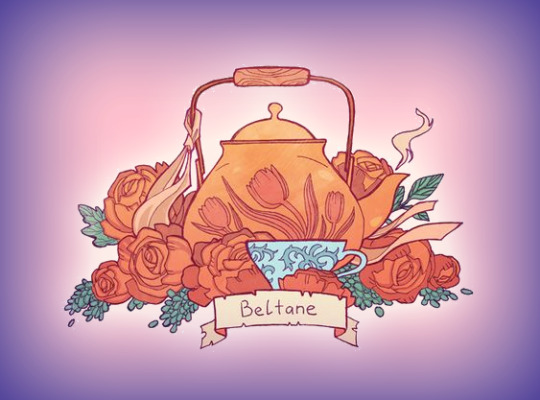
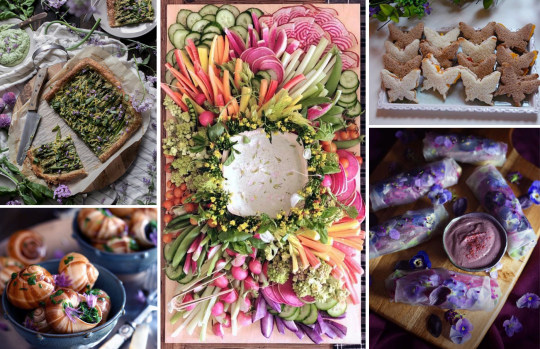

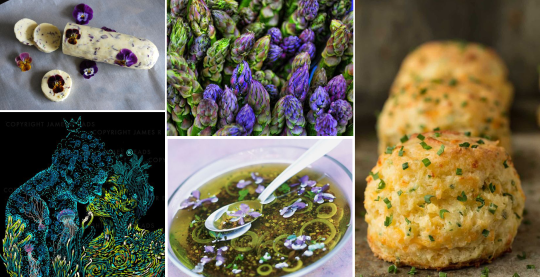
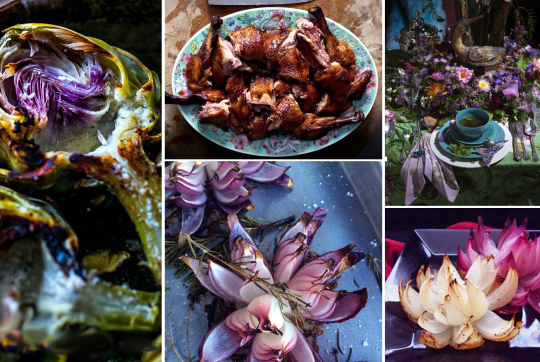
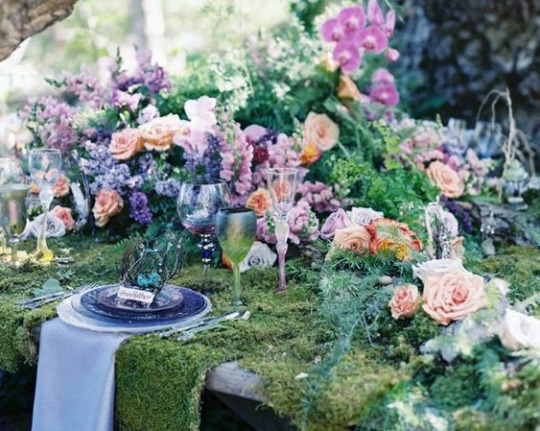
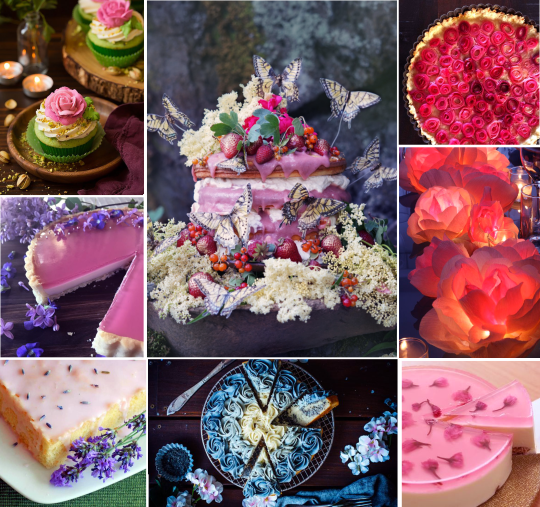
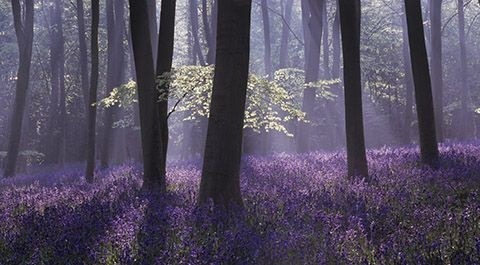

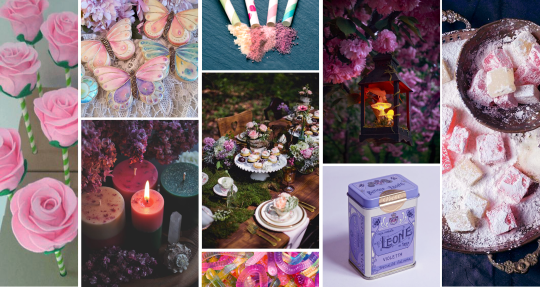
Spring Crossquarter {Beltane} Fantasy Feast
We are nearing the pinnacle of Spring! I long for the day when I can have the most dreamy aromatic sensual Beltane feast and celebration. However creating visual boards is the first step towards that reality. I did go overboard with some of the selections with this one, like I tried to be more Honest in my Imbolc and Ostara board (like as if I were to actually have a feast and constructed a menu) but this one I did not care about portions or the amount of dishes present, I just threw everything in there.
As I have decided to update my 2016 fantasy feasts Beltane was next after Ostara and Imbolc. These visualization posts have helped me manifest some incredible celebrations and gatherings and as my tastes have gotten more extravagant and complicated its time for an upgrade.
In the read more there are the recipe links and additional explanations on personal symbolism and of course the image credits! I also always plan my feasts to be vegan inclusive for those with dietary restrictions but also aim for all the food to be somewhat local which matters in these seasonal feasts since it’s celebrating local nature. Anyway there is something for everyone here.
Keep reading
#beltane#crossquarter#fairycore#feast#feast days#food#recipe#recipes#sabbat#spring crossquarter#spring magic
281 notes
·
View notes
Text

All About Litha
Litha is the modern name given to the Wiccan and pagan holiday for the summer solstice, a.k.a. the longest day of the year. In 2024, the holiday falls on June 20th for the northern hemisphere. Generally, the intense power and energy of the sun is celebrated by those wishing to participate, and many celebrations revolve around fire and light and other symbolic things representing the sun.
Historically, the actual word "Litha" was associated with the June and July months in the Anglo-Saxon communities in Europe, as written by Venerable Bede from the 8th century. However, different cultures and regions have their own names for midsummer or solstice festivals, and Litha is a modern name and version adopted by new-age Wicca and modern Druidry. Some Wiccans and pagans will use the name "Midsummer" for the holiday, though, as that name signifies the many solstice traditions held in Europe as a whole and has a more ancient history in texts. Since their new-age holiday enmeshes many traditions together, Midsummer makes sense as an alternative name.
Because Litha was created by Wiccans, which is a new-age practice, they have adopted different solstice traditions from more ancient pagan religions that aligns with their religious beliefs. Just like other solstice celebrations, their summer Sabbat named Litha is all about the sun and the abundance and life is brings to us all, especially in agricultural communities. The sun's energy is thought to be the most powerful at this time, so many Wiccans use this opportunity for spellwork, cleansing, and energy-intensive work and projects. Since it's a combination of many traditions, there is no one way to celebrate the holiday. Some ways to celebrate include having a bonfire, focusing on love and romance, gathering herbs and other plants, creating flower crowns, singing and dancing, enjoying time outside, and feasting by having a picnic under the sun. Since Wicca is also a very divided religion with many sects, certain branches may celebrate different ways. The overlaps seem to be focusing on the sun, height of summer, and nature, like other religions on the same day. In terms of associations, it is generally believed that anything you associate with summer can be used for Litha, such as fruits, vegetables, flowers, sun, fair weather, bright colors, etc.
Litha Associations
Colors - yellow, orange, red, green, blue, pink, purple, other bright colors
Food - fruits and vegetables, citrus, melons, berries, honey, mead, wine, herbal teas, salads
Animals - bees, snakes, butterflies, birds
Items - sun wheels, sunflowers, chamomile, dandelions, torches, wreaths, flower crowns
Crystals - sunstone, citrine, carnelian, tigers eye, diamond, amber
Other - sun, fire, bonfires, picnics, faeries, love and romance, power, bountiful harvest, high energy
Ways To Celebrate
have a picnic under the sun
make a sun wheel
enjoy a sun themed feast filled with summer foods
have a bonfire
light candles and give thanks to the sun and the light
make a flower crown or bouquet of summer flowers
do spellwork that needs large amounts of energy
use the sun to charge your crystals
make sun tea
make an offering to the faeries
focus on relationship and self love magick
go to a farmers market
go for a nature walk
create a vision board
plan out your goals and projects
sing and dance to joyful songs
gather and dry herbs to use
#litha#wiccan#wicca#pagan#witch#witchcraft#eclectic#wheel of the year#witchy#magick#midsummer#spiritual#witchblr#grimoire#summer solstice#solstice#spiritualism#crystals#spellwork#paganblr#paganism#pagan witch#pagan holiday#summer#sun#magic#magical#spells#spellcraft#witchcore
59 notes
·
View notes